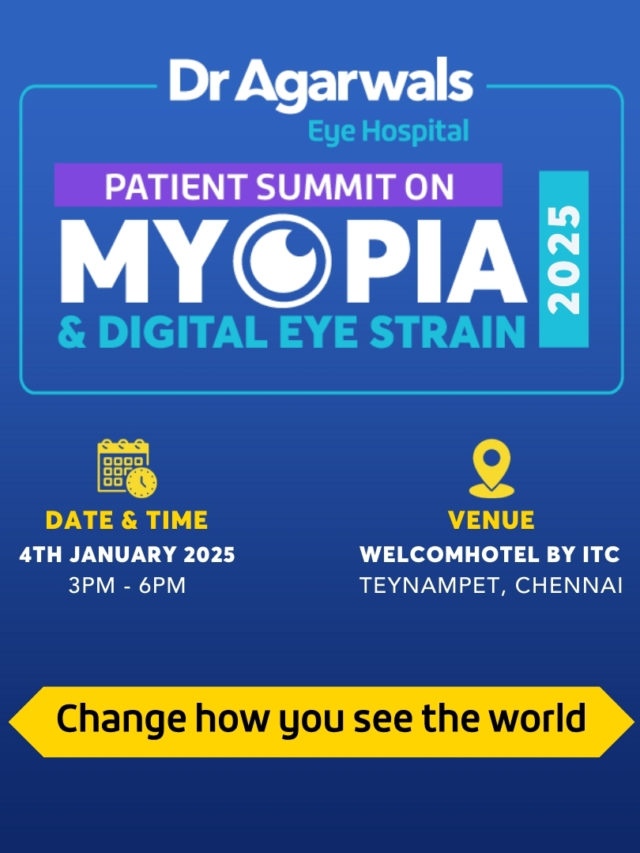A continuous advancement in the digital world has led you to stay more connected to the world. This compels you to be glued to your screens, which is taking a toll on your eye health. While the technological revolution has added convenience and improved productivity in your lives, it has also attracted issues like Computer Vision Syndrome (CVS). This condition is also named Digital Eye Strain. If you invest significant time in front of screens, you are likely to experience the symptoms of this condition.
To alleviate the computer vision syndrome symptoms, you must be aware of the causes and prevention tips. This can protect your precious vision from continuous digital strain and further damage.
Understanding Computer Vision Syndrome
Computer Vision Syndrome or CVS is a modern eye condition characterised by a range of symptoms that occur after prolonged screen use. These symptoms can seem to be mild or severe, but they all share a common source: the digital devices we rely on daily. Here are some of the most common symptoms:
-
Eye Strain
The most prevalent symptom, eye strain, can bring discomfort, aching, or a tired feeling in your eyes.
-
Headaches
Prolonged screen time often leads to tension headaches, especially if your screen is not at the correct eye level.
-
Blurred Vision
Your eyes may struggle to focus correctly, causing blurred or double vision. This hampers your every day chores.
-
Dry Eyes
Reduced blinking when using screens can lead to dry and irritated eyes. It dries the moisture within your eyes.
-
Neck and Shoulder Pain
Poor posture while using digital devices can result in neck and shoulder discomfort.
How Do You Get Computer Vision Syndrome?
In today’s world, it’s nearly impossible to avoid screens. Whether you are working on a computer, binge-watching your favourite series, or scrolling through your smartphone, you are continually exposed to digital devices. Here are some computer vision syndrome causes:
-
Excessive Screen Time
Spending long hours in front of digital screens, be it a computer, smartphone, or tablet, without regular breaks can strain your eyes.
-
Improper Screen Distance
Maintaining screens too close to your eyes or at an improper angle can force your eyes to work harder.
-
Poor Ergonomics
Inadequate workstation setup, including incorrect chair height or screen placement, can contribute to CVS.
-
Uncorrected Vision Problems
If you have untreated refractive errors like nearsightedness or astigmatism, your eyes may work harder to focus on screens. It is best to consult with your eye care professionals to cure underlying problems.
-
Blue Light Exposure
Blue light emitted by your digital screens can disrupt your sleep patterns and potentially lead to Computer Vision Syndrome symptoms.
-
Inadequate Lighting
Working under poorly lit workspaces can strain your eyes as you struggle to read text on screens.
Doctor-Recommended Prevention Tips for CVS
To take care of your eyes, eye care specialists recommend some tips, such as computer vision syndrome treatment, that you can follow every day to prevent further complications. Have a look here to overcome computer vision syndrome causes:
-
The 20-20-20 Rule
Follow this simple rule: every 20 minutes, take a 20-second break and look at random things at least 20 feet away. This reduces eye strain significantly.
-
Ergonomics Matters
Ensure your workspace has everything arranged ergonomically. Your screen should be at eye level, and your chair should provide adequate back support.
-
Adjust Screen Settings
Increase text size, adjust screen brightness, and use blue light filters to minimise eye strain.
-
Blink Regularly
Remember to blink frequently to prevent dry eyes. Consider using lubricating eye drops if needed.
-
Regular Eye Exams
Schedule regular eye exams with an ophthalmologist. They can diagnose any underlying vision problems and prescribe corrective lenses if necessary.
-
Take Breaks
Prioritise breaks between tasks, and use that time to stretch and relax your eyes. You can also practice eye exercises recommended by your eye care professional.
-
Reduce Blue Light Exposure
Use blue light filters on your screens or invest in blue light-blocking glasses, especially if you spend evenings on screens.
-
Proper Lighting
Ensure your workspace and home have adequate, non-glaring lighting to improve visual clarity.
Since screens have become integral to your lives, Computer Vision Syndrome is a prevalent concern. You can mitigate the risk of partial vision loss by understanding computer vision syndrome causes, prevention tips, and computer vision syndrome symptoms.
By taking proactive measures to protect your vision, you can continue enjoying the digital age’s benefits without sacrificing your ocular health. Despite all the precautions, if you experience blurriness or difficulty focusing on the objects clearly, head towards Dr Agarwals Eye Hospital for computer vision syndrome treatment. From minor to severe computer vision syndrome symptoms, our veteran experts analyse your eye condition carefully and provide effective care.
Book your appointment to get brighter and healthier at Dr Agarwals Eye Hospital!








